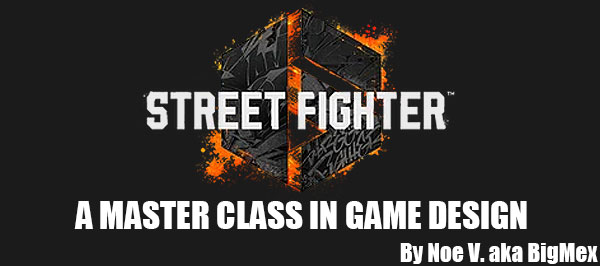
The Street Fighter 6 developers were easing audiences into the World Tour for multiple reasons. They wanted players to learn the controls, and moreover get comfortable with them. They also wanted audiences to level up, and learn new techniques from different masters. This would get them used to the controls, special attacks, and effective ranges for the main SF cast. It would also help audiences build strong avatars with more health. This would increase the odds that they could survive more difficult encounters later on. In order to do this players needed repetition of fights against different styles, and abilities from the residents, and gangs of Metro City. By creating side missions scattered across Metro City the developers were able to deliver all of the above. Early on in the World Tour you were only able to explore half of the city. After reaching a certain part of the game you earned a Metro City Pass, and could now travel via subway to the other side of town.
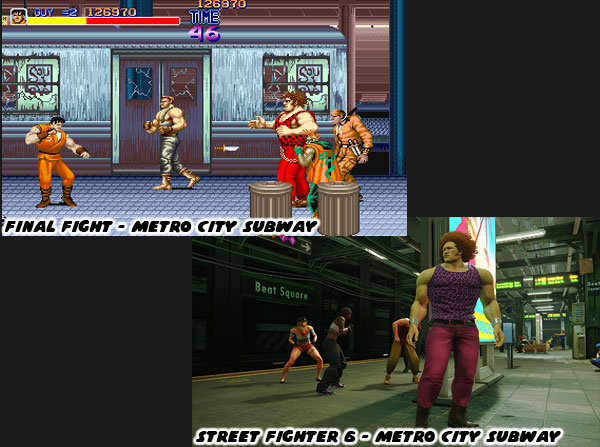
The subway stage was the second level that players went through in the original Final Fight. It provided one of the most memorable stages, and encounters in the history of video games. When I descended the stairs from the Beat Square station into the subway I got literal goosebumps. Once again the developers had managed to recreate the look, and feel of that classic stage but this time in 3D. You could talk, and then challenge individual lower level Mad Gear members hanging out on the platform. Or you could get on the train, and travel to the other side of town.
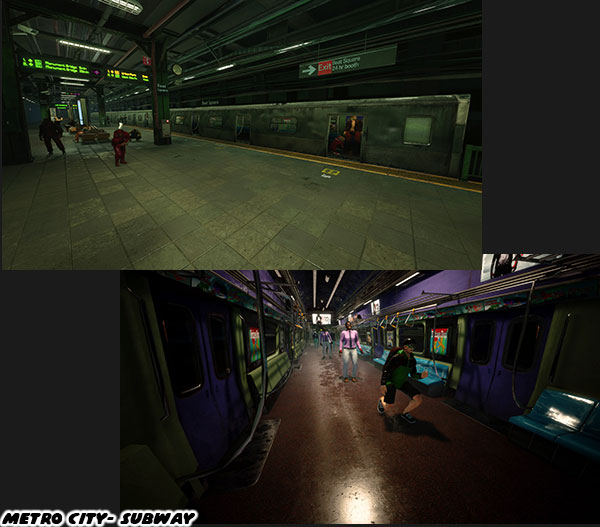
The art team poured through every detail from the original Final Fight, looking for what they could pull. The signage, architecture, and scale of the platform were spot on. Even more impressive were the details placed into the subway cars. The colors of the seats, and doors, the placement of the stanchions, the types of handrails, and even colors of the floors, and roof were spot-on. The well-worn linoleum, and matte-finish seats were the chef's kiss of details. Many would consider these “throw away” details, but they helped convey how dangerous this town was. There was a subtle difference in the updated subway, and that was a part of the storytelling. Mike Haggar was trying to clean up Metro City in the first FF. This meant that most of the city looked run-down, dirty, and covered in graffiti. This was especially true for the subway cars. Previously the cars had broken glass, and lots of graffiti. The newer cars had much less graffiti, no broken glass, and despite their age seemed to be fairly well maintained.
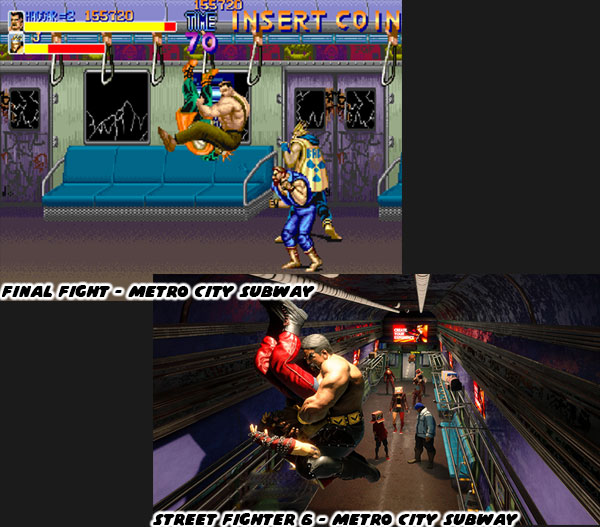
You could actually run from the Beat Square Station to the Urban Park Station faster than the subway could travel between the locations. So what was the purpose of the train? The subway cars actually forced gang encounters onto the player. Almost every rail car had a different number, and type of gang member. Advancing between the cars was like a scene in an action film. You almost expected there to be a Mad Gear boss waiting for you at the head of the train. The number of nonstop battles was a way to make sure players got the necessary experience in order to level up. In fact if you needed more experience, or gear for your avatar then there was no better way than by traveling back, and forth on the subway. Once you reached your destination you discovered another group of Mad Gear members hanging out on the platform. There was a subtle difference in this new station. The tile work on the Urban Park / Mike Haggar Memorial Stadium Station was a different color. Red tiles compared to the Beat Square’s green tiles. These were those small storytelling details that were pulled from real world stations.
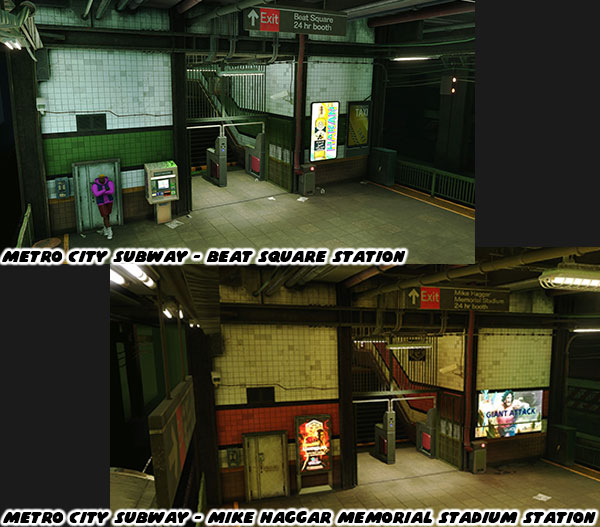
Once players climbed the stairs they were introduced to the Urban Park. In the center of this park was a massive statue dedicated to Mike Haggar. There was a large placard at the base of the statue citing that the citizens of Metro City had this statue built in his honor. During his tenure he managed to turn around a city that was overrun with gangs, crime, and corruption. He didn’t accomplish this solely with policy changes, but by literally taking the fight to the streets. When his daughter was kidnapped by Mad Gear he went block, by block, through the city. He cleaned out the gang, its generals, and leader with his bare hands. With the help of Cody, and Guy of course! When this location was previewed earlier in 2023 many fans of FF were worried that the statue meant that Mike Haggar was dead. I was worried as well, thankfully Street Fighter 6 Director Takayuki Nakayama
confirmed on Twitter that he was alive, and well. I could only hope that a future SF6 update revealed that he was now the Governor of the State, or perhaps a Senator.
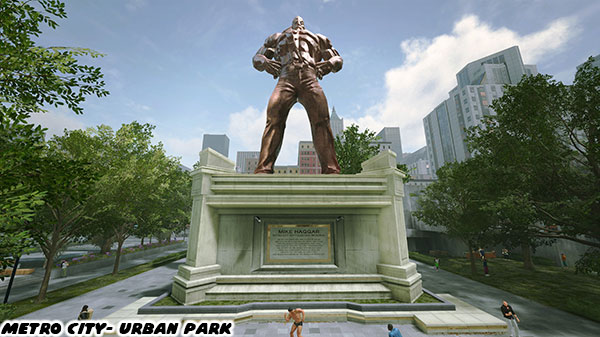
As I had been saying through this series, the team at Capcom was putting in all sorts of details. These Easter Eggs were nods to their legacy. Many fans assumed that the Mike Haggar statue was a new touch. It had actually appeared in an earlier title, specifically Final Fight Revenge developed by Capcom USA, and published by Capcom in 1999. The same statue, albeit much smaller could be seen in the middle of Urban Park. A daytime, and nighttime version of the stage was created for that game. The statue could clearly be both times. FF Revenge was set just after the events of the first game. As such most of Metro City was still in rough shape, but it was starting to get better.
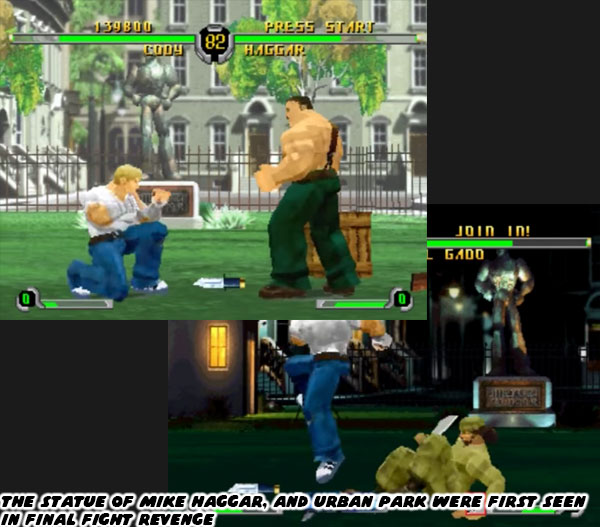
I would argue that the graffiti-covered walls for the stages for Poison, and Edi. E in FF Revenge inspired the development of the Mad Gear, and Crows turf in SF6. A more specific detail pulled from FF Revenge was the claw crane from Abigail’s Scrap Yard. Andore’s stage took place in the middle of a junkyard. In the background you could see the massive crane with the long claw attachment. It was easy to see how this location evolved, and would become the property of Abigail, one of the lieutenants of the Mad Gear gang. Let’s get back to the park however.
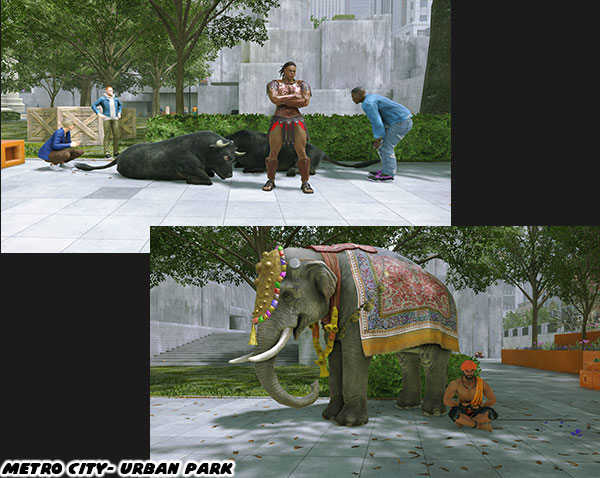
In every major city there were usually a handful of unique parks. New York having arguably the most popular one. Central Park was like a small town to itself, complete with a zoo, museum, and small lake. Urban Park wasn’t as massive but it did have a number of unique features, and also unique characters. There were visitors from overseas visiting the park. Armored warriors reminiscent of Marisa’s guard, and a young bull enjoying the shade. There was also an Indian with a decorated elephant. These characters brought with them the fashion, traditions, and animals that were known to their cultures. They were in town for a fighting tournament in the newly built Haggar Stadium.
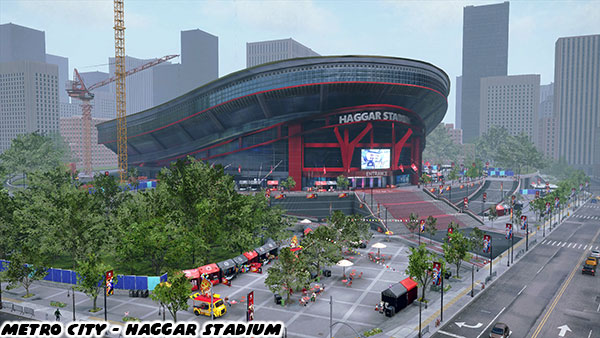
They weren’t the only unique fighters to appear in the park. There was a pro wrestler flexing at the base of the Haggar statue. This was a character that had been written about, but not seen in the games. Antler Inoki was a retired Japanese pro wrestler. He was from the same era of Mike Haggar when he was a pro wrestler, and Meteorito Jr. the trainer of El Stinger, and El Fuerte. The wrestlers featured in Muscle Bomber / Saturday Night Slam Masters
were developed in part by Tetsuo Hara, the co-creator of Hokuto No Ken / Fist of the North Star. Mr. Hara was passionate about pro wrestling, and caricatured a few real world grapplers into his designs. Although the last game in the series came out in 1994 it was still a part of the SF universe.
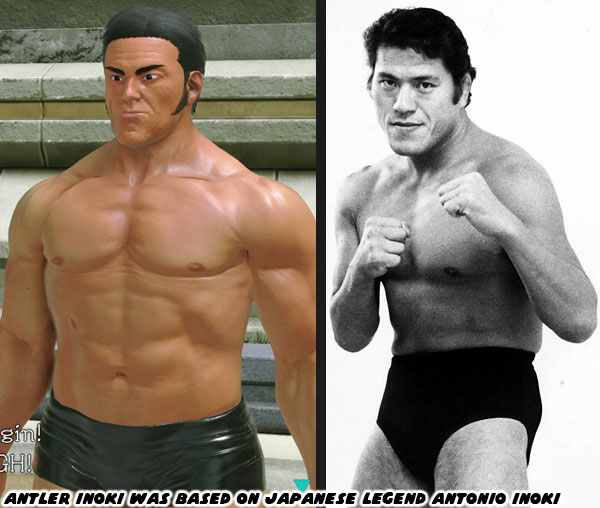
The SF6 developers were also keenly aware of pro wrestling, especially Japanese pro wrestling. They made sure that Antler Inoki looked like Antonio Inoki (RIP) the legend he was based on. Inoki was an iconic personality, with a powerful chin that had been caricatured
in anime, and manga titles over the past 40+ years. That wasn’t the only nod to pro wrestling they got into the game. The designs of wrestling NPCs, the gang members that looked like pro wrestlers, luchadores (Mexican wrestlers), and masked wrestlers were influenced from the real world. Even a poster that Zangief asked you to track down as part of a side mission featured a mask character that was a nod to pro wrestler Shark Boy, as well as the pro wrestling manga Agnes Kamen.
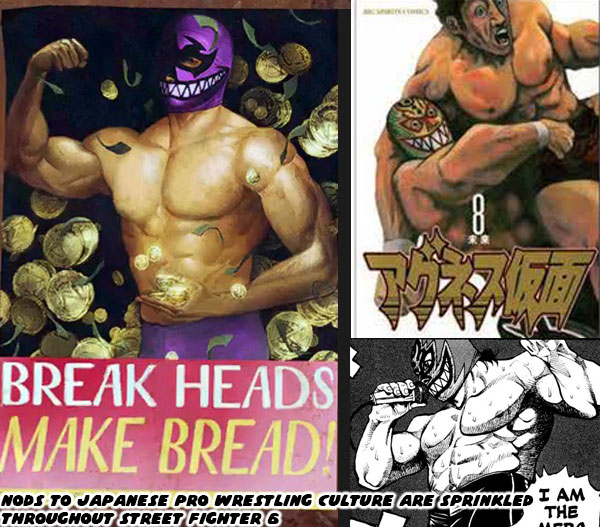
Other rare characters made an appearance in Metro City. They were used to great effect in the World Tour story. I’m going to dig into them in the next blog. I hope to see you back for that. If you are a long time fan of Final Fight, or Street Fighter then I would like to hear your impressions of SF6. If you have never played any game previously then tell me your experiences in the comments section please. As always if you would like to sponsor me
please visit my Patreon page and consider donating each month, even as little as $1 would help make better blogs and even podcasts!






















One of my few complaints with SF6 is the lack of returning SF music. So it was cool when the Stage 2-1 music played while on the subway.
ReplyDeleteI just wish the game did a lot more of that.
DarthEnderX,
DeleteYou are right, it's one thing to bring back locations, and characters, but the music was a big part of the experience too. A new arrangement, or remix of a classic theme would go a long way.